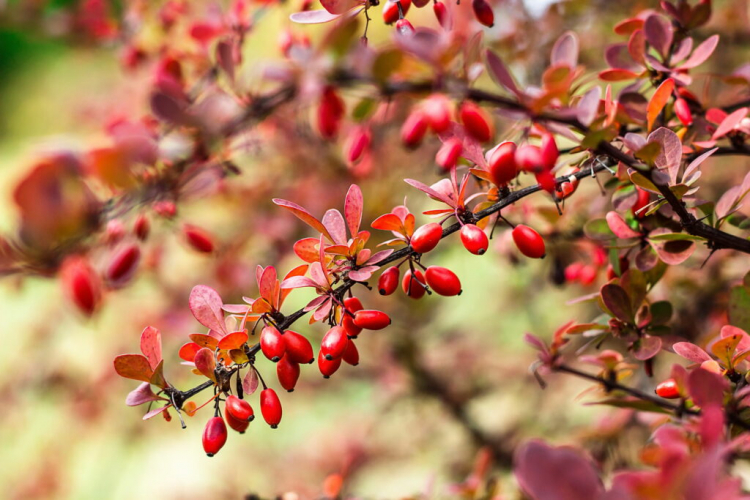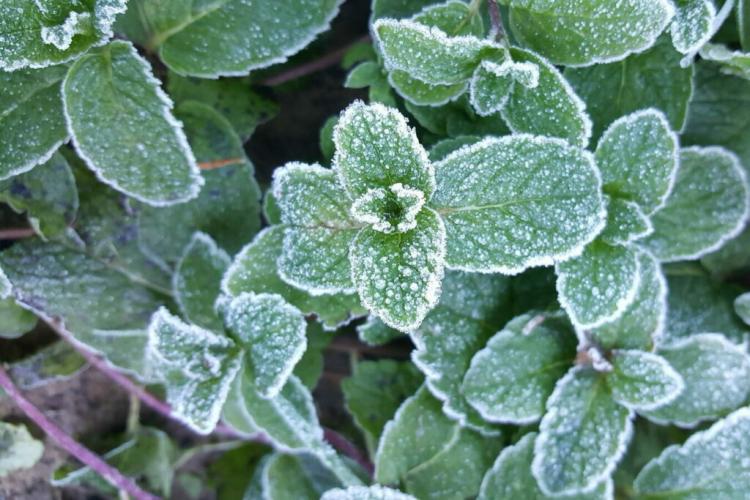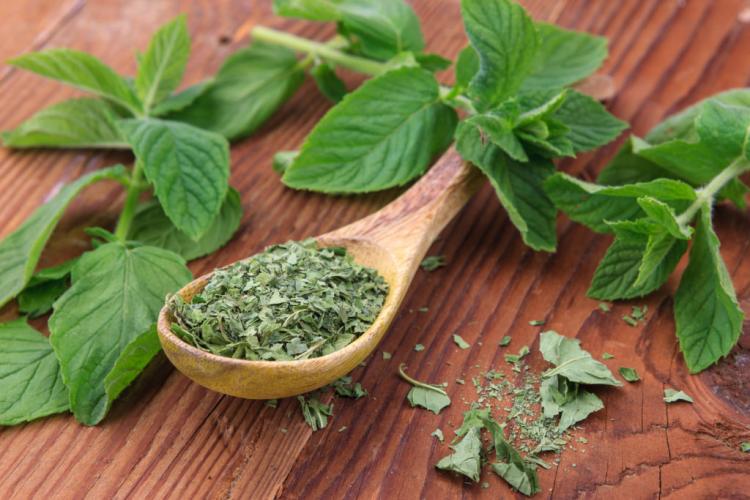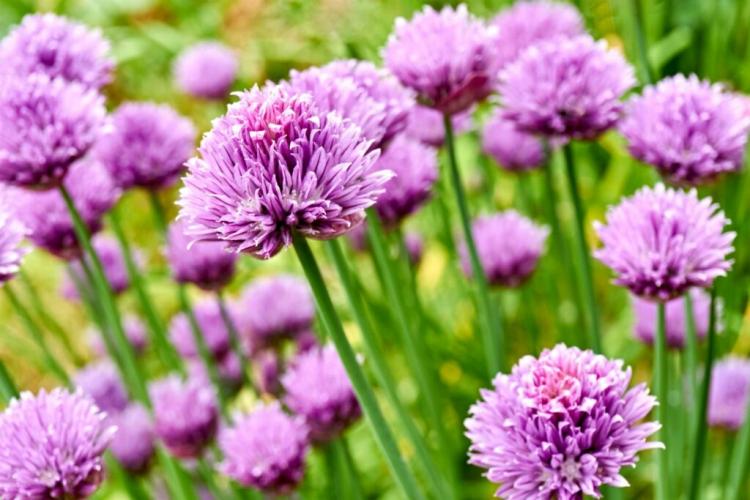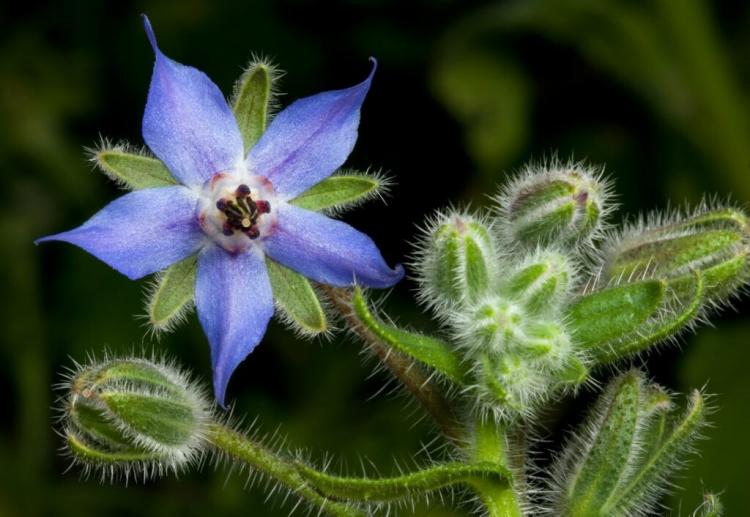Barberries Plant: Caring And Planting For The Wood
The beautiful wood with high ornamental value is very popular as a hedge. Here you can find out what to consider when planting and caring for barberries. Barberries, which are also called sour thorns because of their sour berries and belong to the barberry family ( Berberidaceae ), adorn their surroundings with colorful fruits and yellow flowers, which they use to attract various insects, birds, and small mammals.
In addition, the thorny shrubs are robust and easy to care for, which makes them the perfect wood for your hedge, wood border, or element in the natural garden. The best way to go about planting and what to care for can be found in this article.
With 400 to 600 species, barberries are an extremely species-rich genus. So there is not just one barberry, but many different ones, almost all of which are located outside of Europe. There are fewer than a handful of species in Europe, most are common in the Himalayas and temperate East Asia.
Barberries: origin and characteristics
Table of Contents
It is unclear where exactly the barberries comes from, but it is now widespread on all continents except for Australia. The common barberry ( Berberis vulgaris ) is native to our latitudes, although it is rarely found in the wild. The reason for this is that the common barberries are an intermediate host of a cereal mushroom and have therefore been deliberately almost eradicated in places. Fortunately, the stocks are slowly recovering because the shrub has many useful properties.
Already in the Middle Ages, the barberry was used in many ways, for example, the sour berries were used like vinegar and served as a lemon substitute for the poorer population. The root bark could also be used to naturally dye wool, leather, or linen yellow, and it was used as a remedy for jaundice and liver disease. But there were also all kinds of superstitions about the thorny bush; so the fruits – depending on the shape – should indicate either a short, hard, or long, mild winter.
Barberries are small to medium-high shrubs, rarely also small trees, which can vary greatly in appearance depending on the species. The sour fruits vary, for example, from red to blue to dark purple and provide food for various bird species. The hermaphrodite flowers, on the other hand, are yellow to red in all species. The fragrant flowers of the common barberry are particularly popular with bees and hoverflies. The pointed horns of the barberry are one to five parts and the leaves are arranged alternately.
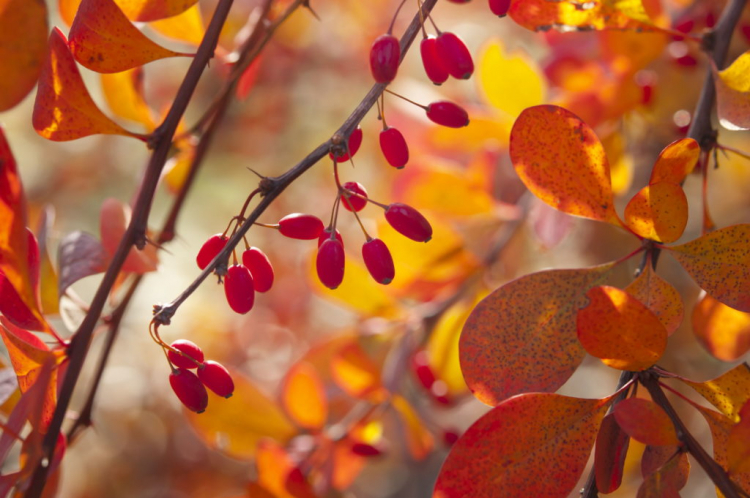
Barberry species and varieties
Finding the right plant for the garden is not that easy, because the different species sometimes have very different characteristics. They differ, for example, in the height and shape of their growth, in the color of the berries, or in whether they shed their leaves in autumn or adorn the garden all year round as an evergreen shrub.
If you want to experience your barberries in bright autumn colors before it sheds its foliage over the winter, then the following varieties are possible:
- Berberis thunbergii ‘Rose Glow’: Growth height up to 150 cm, blood-red leaves shoot in spring, good winter hardiness, and no special soil requirements
- Berberis ottawensis ‘Superba’: very hardy, height 3 – 5 m, drought-resistant, purple-red leaves
- Berberis thunbergii ‘Bagatelle’: dwarf form, height 40 – 50 cm, blood-red leaves, shallow roots

If you would rather have an evergreen variety in your garden, the following selection has proven itself:
- Berberis candidula ‘Jytte’: dense, compact growth; small yellow flowers in May and dark green, narrow leaves
- Berberis buxifolia ‘Nana’: spherical shrub with a height of up to 50 cm, early flowering from April, berry color blue-black
- Berberis frikartii ‘Verrucandi’: Small ornamental shrub that tolerates pruning; Growth height up to 1.50 m; Fruits black, small and elongated; roundish growing; well suited as an opaque hedge
Buy barberries
You can traditionally acquire barberries as young shrubs. You can find these in nurseries, tree nurseries, hardware stores, garden centers, or in various online shops. If you would like a particularly large selection of varieties or if you have special quality requirements, the Internet can be a good source of supply. However, if you can buy your shrub locally, this allows you to take a look at the plant beforehand.
You might so like: Pineapple Flower: Plants, Wintering And The Most Beautiful Varieties Of The Pineapple Lily
Possible diseases such as powdery mildew or pests such as the larvae of the parasitic wasp can be excluded from the start and the vitality of the plant can be checked. If you want to find out more about possible sources of supply and tips on buying barberries, you will find all further information in our special article.
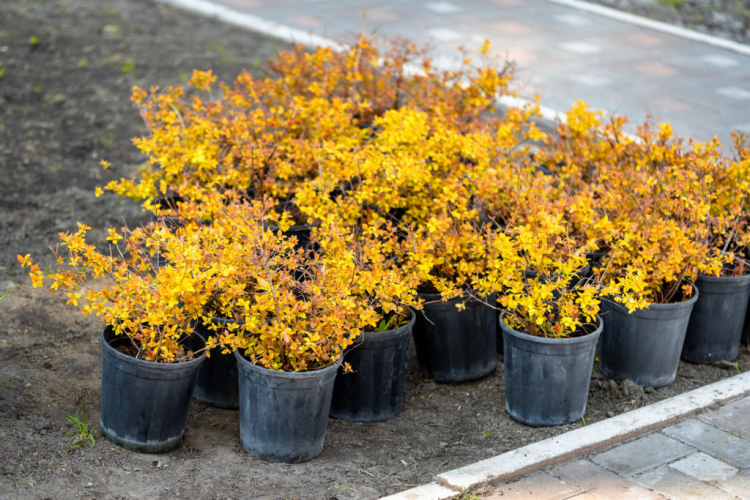
Plant barberry
Whether as a solitary plant or a hedge – the barberry is usually planted as a young shrub. The next sections explain how you can best proceed and what to watch out for.
The perfect location for barberries
As for their location, barberries are quite undemanding. They are even popular for planting extreme locations such as embankments or dry, calcareous soils. Barberries are also adaptable in terms of pH, as many varieties thrive in both acidic and alkaline soils. However, they prefer to stand on a well-drained, humus-rich, and moderately moist surface. Deciduous species also like it sunnier than their evergreen relatives, who prefer to stand in shady and partially shaded locations.
You might so like: Common Zinnia: Plants And Care Tips For A Zinnia Elegans
This is how you plant barberries
When you have received your barberry, you can in principle plant it out all year round. However, in frosty conditions you will not be able to poke through the ground with your shovel, nor will the plant be able to spread its roots, which is why you should choose a frost-free period. There is also a difference between bale and container goods.
Container goods can be planted all year round, while only spring or autumn can be used for bale goods. But the fact whether you have chosen a deciduous or evergreen barberry also has an impact on the time of planting. Because although it is traditionally planted in autumn, it is advisable to plant evergreen barberry in spring, as the plant is busy with rooting until winter. The distance at which the plant gets into the soil depends on the respective species and variety.
As a rule of thumb, it should be kept at least half to a third of its final height as the distance to the next plant. Once you have determined the right distance, the planting holes can be dug. These should be at least so deep that the upper edge of the root ball is flush with the surface of the soil. They should also be 1.5 times the width of the root diameter.
If you are planting a hedge, it is also advisable to stretch a string before digging it out – this will straighten the hedge later. If you want to make your work even easier, it is also advisable to dig a trench instead of many individual planting holes. Before you can start planting, there are a few more steps to take: You can enrich the excavation of the holes or the trench with compost or with a primarily organic fertilizer. The Universal fertilizer provides the plant with the most important nutrients thanks to its three-month long-term effect, without using animal ingredients such as horn meal or bones.
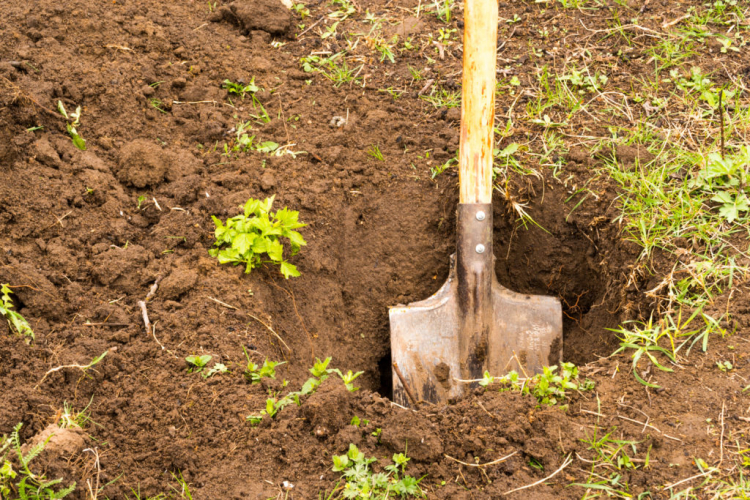
If the root ball is very dry, it can be placed in a water bath before planting. This is then planted with enriched soil. Sludge the shrub well so that it is supplied with sufficient water at the beginning. In the case of container goods, be sure to mark the roots before planting, as this will encourage the branching of your shrub. In the case of bale goods, the bale cloth or wire ball should be opened.
Planting barberries – in a nutshell:
- The ideal time in autumn, with evergreen varieties in spring
- Plant spacing: half to a third of the final growth height
- Planting hole: at least 1.5 times the volume of the root ball
- Enrich the excavation with compost or primarily organic fertilizer
- Plant the shrub with excavated material and silt it up
- Container goods: mark the roots
- Bale goods: Open the bale cloth or wire ball
- If the location is dry, apply a layer of mulch
Plant barberries as a hedge
With their sharp, long thorns, barberries are virtually burglar-proof and therefore particularly suitable as hedge plants. Very large species such as the large-leaved barberry ( Berberis julianae ) also protect you from prying eyes. In addition to their function as a hedge, they also offer shelter, nesting opportunities, and food for birds, insects, and small mammals.
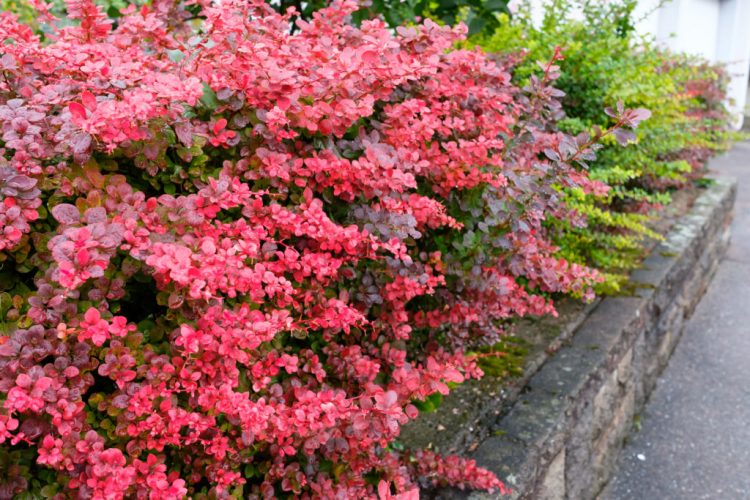
Maintain barberry
Barberries are robust and easy to care for and, once they are established, require little attention. Therefore, the care measures can be summarized in a few sentences.
Water and fertilize barberry
If the barberry is used to the location and is well-rooted in the soil, it can in principle get along well without additional fertilization. In the first years of standing or when you cultivate your barberry in the bucket, an additional dose of compost or mainly organic fertilizer such as our Plantura universal fertilizer with long-term effects helps.
The barberry only needs to be poured during periods of prolonged drought. However, if it has just been freshly planted or if your barberry is in the bucket, it is advisable to regularly check with your fingers whether the substrate is still sufficiently moist.
Cut the barberries shrub
In the first few years, there is usually no need to think about cutting back. Only when the ornamental shrub has reached its full size and begins to get out of shape, the secateurs are used. In principle, it is sufficient to prune the barberry every one to two years. It is best to do this immediately after flowering, as it is an early bloomer.
When pruning, old, diseased, and dead shoots are removed as close to the base as possible. A balance must be created between old and new instincts. If your shrub begins to bald or overgrown, you can regenerate it with a powerful cut in the spring. If you have laid out your barberry in the form of a cut hedge, you will have to resort to hedge trimmers more often. Most of the time, the hedge is trimmed once or twice a year so that it retains the desired shape.
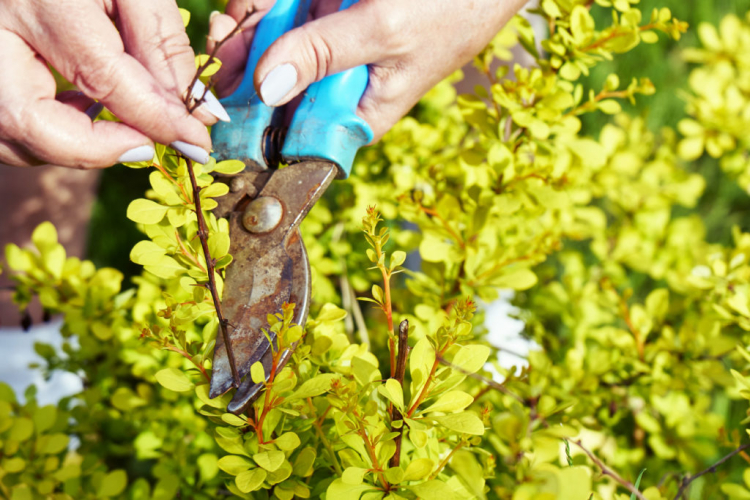
Propagate barberry
The easiest way to propagate the barberry is with the help of cuttings. To do this, around 10 to 15 centimeters long, slightly woody shoots are cut off with secateurs in summer. The cutting is then placed in a tall container with low-nutrient potting soil, in which it can develop its roots. However, the lower leaves are removed beforehand, as this can prevent fungal infestation. You should also remove any existing flower buds, as these hinder the formation of roots. For successful propagation via cuttings, make sure that the substrate is always sufficiently moist.
Is the barberry poisonous or edible?
Although the red fruits of the common barberry are healthy and tasty, all other parts of the barberry are considered to be slightly poisonous. Except for the fruit, alkaloids with the main alkaloid berberine can be found in all barberries. This can lead to symptoms of intoxication from just half a gram ingestion, which can be manifested in symptoms such as difficulty breathing, nosebleeds, and drowsiness. The alkaloid content in the root bark of the barberry is particularly high.
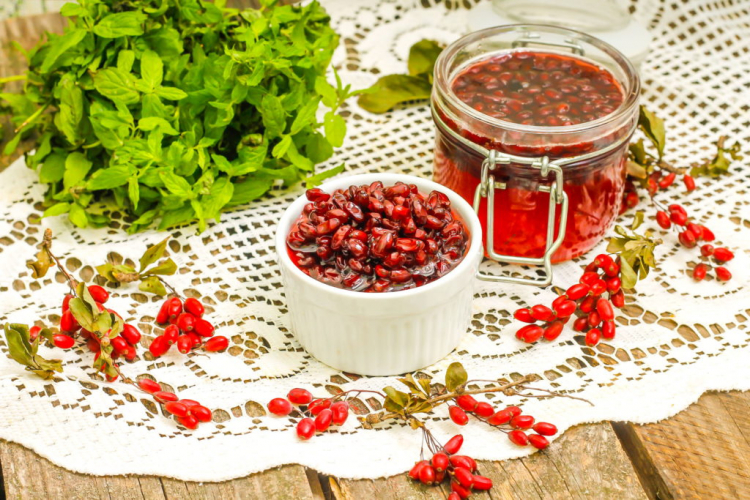
Healthy barberry: medicinal properties and uses
Not only do the birds look forward to the sour fruits in autumn, delicious jam, compote, or juice can also be conjured up in the kitchen from the berries of the common barberry. In oriental countries such as Iran, the berries are also often used to refine dishes. The sweet and sour tasting fruits, which are full of vitamin C, are harvested when they are soft and dark red. However, the kernel is not eaten and must be removed. In addition to the fruit, other parts of the barberry are also used for therapeutic applications, such as the root and root bark.
Various alkaloids are used as active ingredients in these parts of the plant, which among other things lower blood pressure or stimulate intestinal peristalsis and bile secretion. However, it is not advisable to make your own remedy from parts of the barberry, as the common barberry, except for the berries, is considered to be slightly poisonous and this can quickly lead to severe complaints if the wrong dose is used.
